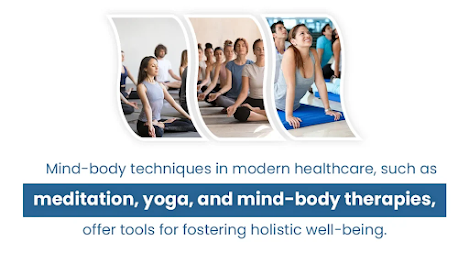Yoga and Mind Healing: A Path to Inner Harmony
In a world often consumed by chaos and noise, the pursuit of inner peace has become both a necessity and an art. Yoga, a centuries-old practice, offers a holistic approach to healing, not just the body but the mind and spirit. Far from being merely physical exercise, yoga is a profound journey toward mental clarity, emotional balance, and self-discovery.
The Essence of Yoga
Derived from the Sanskrit word “yuj,” meaning “to unite,” yoga symbolizes the union of body, mind, and soul. Originating in ancient India, it encompasses physical postures (asanas), breath control (pranayama), meditation (dhyana), and ethical principles (yamas and niyamas).
This integration nurtures the mind’s ability to transcend stress, anxiety, and negativity, fostering a state of inner calm and resilience.
The Science of Mind Healing Through Yoga
Yoga’s impact on mental health is increasingly validated by science:
- Stress Reduction: Yoga lowers cortisol levels, the body’s primary stress hormone, creating a physiological shift toward relaxation.
- Emotional Regulation: Mindful practices within yoga, like meditation and breathing techniques, enhance the brain's prefrontal cortex function, which governs emotional responses.
- Improved Focus and Clarity: Regular practice boosts neuroplasticity, sharpening focus, memory, and problem-solving skills.
- Combatting Anxiety and Depression: By activating the parasympathetic nervous system, yoga counters the fight-or-flight response, fostering feelings of safety and calm.
Key Yoga Practices for Mind Healing
-
Asanas (Physical Postures):
- Child’s Pose (Balasana): Encourages deep relaxation and release of tension.
- Tree Pose (Vrikshasana): Enhances focus and grounding.
- Corpse Pose (Savasana): Promotes complete mental and physical relaxation.
-
Pranayama (Breath Control):
- Alternate Nostril Breathing (Nadi Shodhana): Balances the left and right hemispheres of the brain, calming the mind.
- Deep Belly Breathing: Reduces anxiety and fosters mindfulness.
-
Meditation Techniques:
- Mindfulness Meditation: Anchors the mind to the present moment, cultivating awareness.
- Loving-Kindness Meditation (Metta): Encourages compassion toward oneself and others, alleviating feelings of isolation.
-
Mantras and Chanting:
Vibrations from chants like “Om” create a soothing resonance, aligning the mind and body in harmony.
The Human Connection: Yoga as a Philosophy of Healing
Beyond its techniques, yoga’s philosophy fosters profound healing by cultivating self-awareness and acceptance:
- Non-Attachment (Aparigraha): Teaches the mind to let go of material and emotional burdens, fostering freedom.
- Contentment (Santosha): Encourages gratitude and satisfaction, reducing mental unrest.
- Self-Discipline (Tapas): Strengthens the willpower to overcome mental barriers.
A Journey, Not a Destination
Yoga is not a one-size-fits-all remedy; it’s a personal journey. Its true power lies in its adaptability—it meets you where you are, whether you're seeking relief from daily stress or healing from deeper emotional wounds.
Conclusion
Yoga is more than a practice; it’s a way of life that integrates physical strength, emotional balance, and spiritual growth. In embracing yoga, we learn that healing is not about erasing challenges but cultivating the resilience to face them with grace and clarity.
By uniting the body and mind, yoga reminds us that peace is not something to find—it’s something we create within.







0 Comments